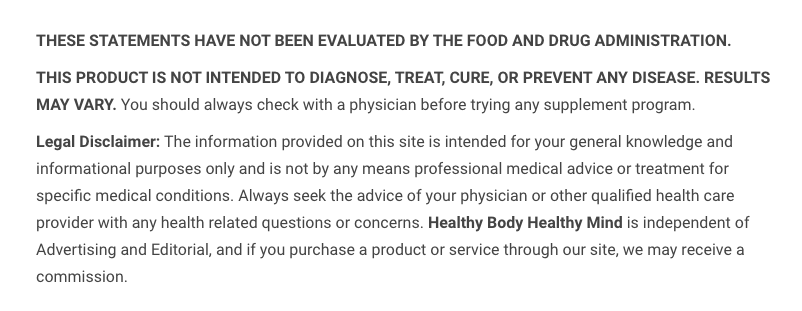Let's Talk About Telomeres
Telomeres are really important. Scientists have known about the presence of telomeres since the 1930s. But it has taken far longer to decipher exactly why they are there, what they do and how they affect the human aging process.
In fact, telomeres are so vital they have won the Nobel prize for at least five scientists to date and likely more yet to come.
But what is a telomere exactly? Where is it located inside your body? Why do some people call them “genetic shoelaces?” Find out now!
What Is a Telomere?
The term telomere (tel-uh-meer) comes from two Greek root words: telos and meros. Telos means end and meros means part. So simply translated, telomere means “end part.”
So at its most fundamental, a telomere is an end part. But an end part to what? Let's find out!
To understand more precisely what a telomere is, it helps to visualize a shoelace – yes the kind that is probably threaded through the many little holes on your tennis shoes right now.
There is the shoelace part – the fabric piece that does the hard work of holding the tops of your shoes closed. And then there is that little plastic bit at the ends – this part is what keeps the shoelace fabric from unraveling over time and with repeated use.
At a cellular level, the fabric part of the shoelace is a strand of your DNA. The plastic bit at the end is a telomere.
Just like you rely on that plastic end cap to keep your shoelaces usable, so too does each strand of your DNA (and thus your whole body system) rely on the telomere at its end to keep the instructions encoded inside that strand of DNA intact and readable over the long term.
What Is Inside a Telomere?
Inside of the plastic end cap on your shoelace, you will find more fabric, tightly compacted.
Similarly, inside the telomere at the end of each strand of your DNA, you will find many tiny copies of that same strand of DNA all packed in together.
Here, when we say “many tiny copies,” we mean anywhere from 3,000 to 15,000 copies – all compressed into that tiny end-cap telomere.
What Work Do Telomeres Do?
So now you know that telomeres are essentially really tiny copy machines conveniently located at the end of each strand of your body's DNA.
Why would each DNA strand need its own copy center?
In short, this is because our cells are constantly dying out and need to be replaced. As old cells die, the information locked inside the telomeres gets busy replacing them.
Every copy session shortens that telomere by just a tiny amount. When a telomere gets shortened severely, it can no longer copy the DNA it is attached to effectively.
If you have ever heard someone talk about a person's “biological age,” it is telomere length they are actually referring to. Your biological age can be different from your chronological age (more on this later, but check out our Elysium Health article here)
Do Telomeres Do Anything Besides Copy DNA?
In addition to a telomere's most important job of copying DNA to make new cells, telomeres also fulfill two other functions.
First, they protect the DNA strand by forming a cap that prevents one strand of DNA from accidentally getting attached to another strand of DNA or other cellular matter.
And second, they help keep our 46 chromosomes when a cell divides to form new cells.
Researchers now understand that while duplication is ongoing, the telomere will attach to the cell nucleus to oversee an orderly copy process. Once copying is complete, the telomere moves away from the nucleus.
What Is the Difference Between Chronological Age and Biological Age?
Chronological age, as you likely have already guessed, is the age you turn whenever you have a birthday. Strictly speaking, your chronological age is the number of years you have been on the planet.
Your biological age, however, is the age of your cells. Senescence is the term that describes cellular aging. The state of your cells and the DNA contained inside them can be older or younger than your chronological age.
Sometimes your chronological and biological ages may be close together (especially early in life).
But as you grow older, your chronological age and your biological age may begin to differ by a little or a lot and in either direction.
Part of the reason for this is because of the inevitable shortening of the telomeres as cells near death, replicate and renew themselves, all with the help of their telomeres. This is the part, the “end replication sequence,” that no one has figured out how to control or overcome as of yet.
But the telomeres' copying function is not the only way they can grow shorter. There is another type of damage that is very much within your control and that relates to lifestyle choices. This type of damage is called “oxidative stress” and relates to everything from diet to exercise habits to smoking or stress or exposure to illness or injury.
People who have excellent nutrition, get plenty of sleep, exercise regularly, drink plenty of pure water, learn stress management methods and are generally healthy overall are likely to have a biological age that more closely matches their chronological age.
In contrast, people who choose to smoke or vape, skip exercise, make poor dietary choices, overdose on caffeine or alcohol, avoid plain water, experience chronic stress and deprive themselves of sleep are more likely to have a biological age that is older than their chronological age.
What Helps Telomeres Stay Useful Longer?
In 2009, a trio of researchers jointly earned the Nobel prize for figuring out what helps telomeres keep doing their job well throughout life. That secret helper is an enzyme called telomerase.
Telomerase also has another very important function. The telomere itself covers the very last bits of the DNA sequence it is there to protect and transcribe. Telomerase allows the telomere to copy the full DNA sequence, including the covered parts, accurately every time.
Not all cells have equal amounts of available telomerase. Interestingly, the cells with the highest natural levels of telomerase include the body's reproductive cells (egg, sperm) and cancer cells.
The cells with the lowest natural levels of telomerase include the non-reproductive (somatic) cells of the body.
As well, some genetic (heritable) diseases have now been linked to abnormally low levels of telomerase, including diseases related to the blood, skin and lungs.
Any cell that does not have access to sufficient levels of telomerase is at risk of replicating improperly – in essence, mutating rather than replicating.
Ongoing Telomere and Telomerase Research
There is a lot more to learn about the relationship between telomeres, telomerase and the body's cells.
Here is information about some interesting studies that are ongoing.
Telomerase can restart cell replication.
One fact researchers have confirmed to date is that when a cell's access to telomerase is blocked, that cell will stop replicating because they no longer have the means to do so accurately. These cells then enter the aging process (senescence).
If telomerase access is restored, however, the cells pick right up where they left off and start replicating again.
Science is interested to learn if telomerase has potential applications in cell replication for growth of transplant organs, skin regeneration after burns and injuries and even anti-aging treatments.
Telomerase may be a predictor of longevity.
Research using animal (mice) models has indicated the length of the telomeres can be one potential predictor of an organism's longevity.
However, what researchers do not yet know is whether telomere length is responsible for the aging process or is a result of the aging process.
Researchers now believe several factors contribute to aging, one of which may be telomere length and access or lack thereof to telomerase.
The reason researchers do not think telomere length is the sole influence in aging is because only certain cells related to reproduction have significant levels of telomerase throughout life. For these cells, telomere shortening never becomes a significant issue anyway.
As for the rest (somatic non-reproductive cells) of the cells, they have only minimal amounts of telomerase available for use to start with and are destined to shorten over time.
Telomerase to fight cancer.
Other than reproductive cells, the only cells known to have ample access to telomerase are cancer cells and other germ cells.
Cancer cells are able to replicate so abundantly precisely because they have near-unlimited stores of telomerase so they never age. Cancer cells can replicate continually without fatigue or mutation.
Researchers are now working towards the possible development of telomerase inhibitors that specifically target these dangerous types of rapidly diving cells such as cancer cells and other germ cells. Check out the latest research on NAD+ supplements here.
The goal is to block cancer cells' access to telomerase without affecting the organism's own healthy cells that also need telomerase to replicate. Right now, researchers do not yet have a mechanism to achieve this.
However, there is a great deal of promise in continuing to study telomerase, how it impacts cells and whether future telomerase-inhibiting medications might be able to kill cancer cells and stop the progress of serious disease.
In summary, telomeres and telomerase are clearly critical mechanisms that impact the health and vitality of any organism, from single-celled entities to human beings. Ongoing research into telomeres and telomerase is expected to yield new, exciting and potentially life-saving information, including new medications, in the years to come.






